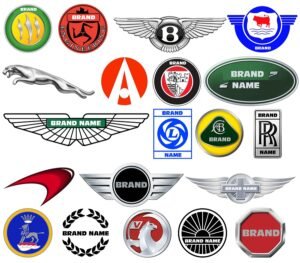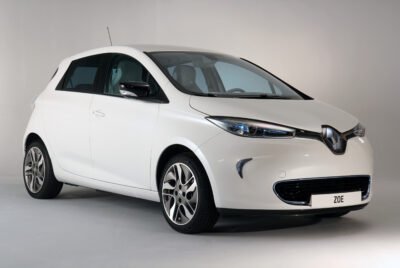The logos of automobile manufacturers have become some of the most recognizable symbols in the world. These logos represent more than just the brands they’re associated with—they’re a visual representation of the company’s history, values, and identity.
Over the years, automobile logos have evolved to keep up with changing design trends, technology, and branding strategies. Let’s take a closer look at the evolution of automobile manufacturer logos, from their humble beginnings to the modern designs we see today.
The Early Years: Simple and Functional Logos
In the early years of the automobile industry, logos were designed to be simple and functional. They were often based on the company’s name or the product they were selling. For example, Ford’s first logo was simply the company’s name in a stylized font. General Motors, on the other hand, used a simple crest design that featured the letters “GM” and a pair of wings.
These early logos were designed to be easily recognizable and help customers identify the brand. However, they lacked the branding power and recognition of the logos we see today.
The Rise of Modernism and Branding
In the 1920s and 1930s, automobile logos began to evolve with the rise of modernism and the importance of branding. Logos became more than just a simple symbol—they were a way to differentiate one brand from another and convey a company’s values and identity.
During this period, automobile logos began to incorporate more graphic design elements, such as bold typography, streamlined shapes, and abstract symbols. For example, the Mercedes-Benz logo, which was first introduced in 1926, features a simple, elegant design that incorporates the company’s name and a three-pointed star that represents the brand’s focus on land, sea, and air travel.
Technology and Innovation: Shaping Logos for the Future
As technology and innovation advanced, so too did the design of automobile logos. Logos became more complex and intricate, incorporating new design elements and techniques that reflected the industry’s cutting-edge technology.
One example of this is the Volkswagen logo, which was introduced in 1938. The logo features the company’s name in a simple, bold font, but also incorporates a V and W that are intertwined to create a distinctive shape. This logo has remained largely unchanged since its introduction, making it one of the most recognizable logos in the world.

Changing Tastes and Design Trends in the Industry
As tastes and design trends changed in the automobile industry, logos began to evolve once again. In the 1960s and 1970s, for example, many logos began to incorporate more playful and colorful designs.
One example of this is the Fiat logo, which was redesigned in 1968. The new logo features a circular design that incorporates the company’s name in a bold, playful font, as well as a red and blue striped pattern that represents the Italian flag.
Today’s Modern Logos
Today, automobile logos continue to evolve and adapt to changing design trends, technology, and branding strategies. Many modern logos are designed to be sleek, minimalist, and instantly recognizable.
One example of this is the Tesla logo, which features a simple, sleek design that incorporates the company’s name in a bold, futuristic font. The logo is instantly recognizable and has helped to establish Tesla as a leader in the electric car industry.
Another example is the Audi logo, which was redesigned in 2009. The new logo features a sleek, minimalist design that incorporates the company’s four rings in a three-dimensional design. The logo represents the brand’s commitment to innovation and cutting-edge design.
The evolution of automobile manufacturer logos reflects the changing tastes, design trends, technology, and branding strategies.






